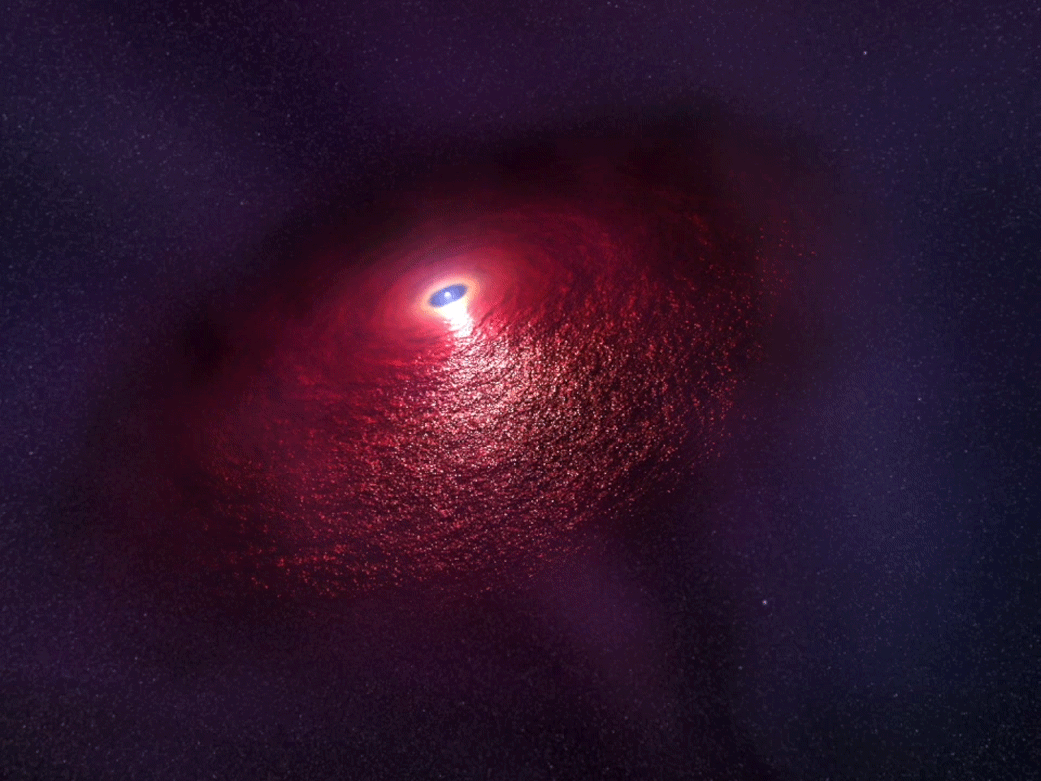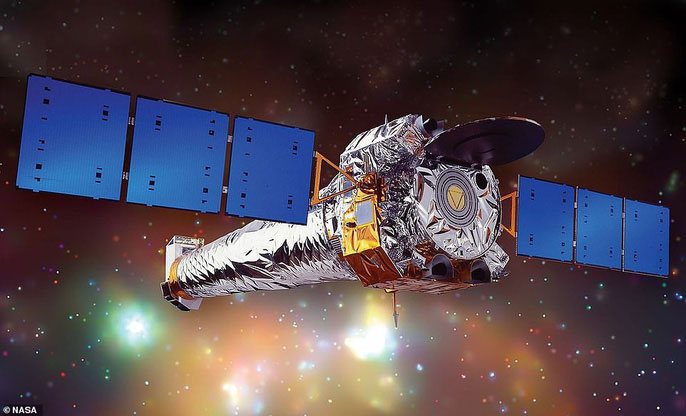Close up of a star's death
NASA continuously captured two precious moments of millions of years with one: the death of a star 19,000 light-years away and the birth of another star in the Scorpion constellation.
The first image was taken by Chandra X-ray Observatory of the US Space and Aeronautics Agency (NASA), showing the youngest pulsar that scientists have ever seen.

Death of a star - (photo: NASA).
The pulsar is a very fast rotating neutron star , extremely dense material and the remaining "remains" after a star has died. At the end of its life, the star will eventually explode into a supernova and then fade away, leaving the neutron star wandering in the universe.
According to NASA, this pulse - named Kes 75 - belongs to an old star 19,000 light years from our planet. The data collected is valuable because it helps scientists better understand what happens when a star has just died.

Pure infrared radiation from the rotating core of another dead star was recorded last month by NASA - (photo: NASA).
Around the pulsar, there are still countless high-energy X-rays produced by the wind of matter and energy particles, drawing beautiful purple veins. These particles fire at the speed of light from the pulsar itself because the pulse is so fast.

Chandra X-ray observatory is a spacecraft - (photo: NASA).
Subsequently, NASA's Spitzer Space Telescope continued to capture the beautiful image of a newborn star in the Cat's Paw, belonging to the Scorpius constellation.

Close-up of the Foot Cat Nebula, where the star has just arrived - (photo: NASA).
In it, giant "bubbles" light up in the area forming stars that mark places with newborn stars.
This image was compiled using data from the Infrared Array Camera (IRAC) and the Spitzer Multi-tasking Spectrometer (MIPS) - both a telescope and a super-modern spacecraft.

Cat's Foot Nebula taken with infrared camera - (photo: NASA).
Estimate the distance from the Earth to the Cat's Foot Nebula about 4,200 to 5,000 light years. This nebula is a "nursery" in our Milky Way galaxy, because it contains up to 2,000 extremely young stars.
- Human experience when it comes to death
- The mysterious death of some stars
- See the experience description
- Stories about the feeling of coming close to death are real in the world
- 9 interesting things about stars
- Actual photos of two stars are eating each other
- Detecting a pair of stars
- Orion Nebula, the cradle is full of disturbance
- Explain the mystery of missing stars in the universe
- How are stars created?
- Revealing the state of people when they are close to death
- The formation of young star generations
 Van Allen's belt and evidence that the Apollo 11 mission to the Moon was myth
Van Allen's belt and evidence that the Apollo 11 mission to the Moon was myth The levels of civilization in the universe (Kardashev scale)
The levels of civilization in the universe (Kardashev scale) Today Mars, the sun and the Earth are aligned
Today Mars, the sun and the Earth are aligned The Amazon owner announced a secret plan to build a space base for thousands of people
The Amazon owner announced a secret plan to build a space base for thousands of people